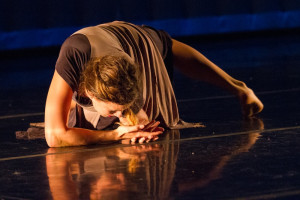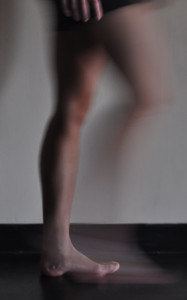Unfolding the Japanese Aesthetic
CORE Performance Company responds to two Japanese art exhibitions with The Image Unfolds
When the Museum of Fine Arts, Houston approached Artistic Director Sue Schroeder of CORE Performance Company to create a work of modern dance inspired by two upcoming Japanese-themed special exhibitions, she wholeheartedly embraced the project.
Over the course of CORE’s 18-year partnership with the MFAH, Schroeder has created a number of pieces to pair with exhibitions as a way to provide a different entry point for viewers to look at the art.
“We normally get contemporary art as our inspiration,” said Schroeder.
This time, the art is very much culturally based, and it covers two different time periods. Schroeder’s six-dancer piece, The Image Unfolds, will premiere Thursday, April 16 at the Brown Auditorium. The free performance takes its inspiration from the exhibitions Unfolding Worlds: Japanese Screens and Contemporary Ceramics from the Gitter-Yelen Collection, and For a New World to Come: Experiments in Japanese Art and Photography, 1968-1979.
“With this kind of project, CORE physicalizes the art. We’re not there to lecture — we’re there to inspire the audience to look at the art, maybe in ways they hadn’t thought of before,” explained Schroeder.
 “[In The Image Unfolds], we’re working with two very different emotional times in Japanese history, from the traditional Japanese art of screens and ceramics to photography from the era when the closing of the Japanese internment camps was still fresh on everyone’s minds. The whole Japanese aesthetic is the through line of the choreography.”
“[In The Image Unfolds], we’re working with two very different emotional times in Japanese history, from the traditional Japanese art of screens and ceramics to photography from the era when the closing of the Japanese internment camps was still fresh on everyone’s minds. The whole Japanese aesthetic is the through line of the choreography.”
The resulting one-hour choreography incorporates projected images of the art and, in Schroeder’s words, embraces simplicity: “There’s a clarity to it, and there’s also starkness. We’re going to stay in the black/white/gray elements for costuming so it has a way to interface with both the very decorative arts and the starkness of the photography.”
Schroeder and the dancers researched a few Japanese terms and worked with a costumer to develop designs based on the vocabulary, including: Mono No Aware, the “poignant beauty of things”; Wabi Sabi, two complementary concepts that together refer to austerity, imperfection and the palpable sense of the passage of time; and Yungen, made up of two characters that together refer to “shadowy-ness” and “dimness,” and “darkness” and “blackness.”
 Schroeder chose to set her choreography to a composition called “Imitation” from the studio album The Happy End Problem (Music for Dance Volume 5) by English guitarist Fred Frith. The 2003 album features flute, bassoon, percussion, violin, electronics, gu zheng (a Chinese plucked zither with at least 18 strings) and shakuhachi (Japanese end-blown flute). The shakuhachi player, Kikutsubo Day, was a student of Frith’s at Mills College in California at the time of the recording; he structured “Imitation” around her playing.
Schroeder chose to set her choreography to a composition called “Imitation” from the studio album The Happy End Problem (Music for Dance Volume 5) by English guitarist Fred Frith. The 2003 album features flute, bassoon, percussion, violin, electronics, gu zheng (a Chinese plucked zither with at least 18 strings) and shakuhachi (Japanese end-blown flute). The shakuhachi player, Kikutsubo Day, was a student of Frith’s at Mills College in California at the time of the recording; he structured “Imitation” around her playing.
As for the movement, Schroeder was particularly interested in playing with the concept of folding, taken directly from the way Japanese screens fold and unfold. This interpretation reverberates throughout the dancers’ bodies as they crease and unfurl in turn.
And as images from the two exhibitions are projected behind the dancers onstage, an entirely new experience will unfold — one that will bring another dimension to these Japanese works of art.
Claire Christine Spera is an Austin based writer and dancer.




Recent Comments